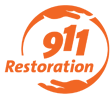How To Remove Black Mold From Your Walls
Mold is an integral component of nearly every environment. Spores can move freely through the air and settle on surfaces. Spores can also be found in carpeting, upholstery, and porous walls. You shouldn’t encourage them into making a permanent home inside your home. Most molds are harmless. Black mold is a very common type of mold that can be found in homes and property owners are worried about. Black mold can cause a dark, patchy appearance to walls. Learn more about black mold, and how it can grow on walls.
How To Safely And Permanently Eliminate Black Mold
Many molds have dark or black colors. However, the term is usually used to refer to one specific strain of mold, Stachybotrys chartarum. It can be found in many different colors, but most people call it black. This mold is sometimes described as gelatinous. Due to its high moisture content, it often appears to have a thin slime coating. When dried, black mold can look pale or powdery. Numerous reports indicate that S. Chartarum does not cause any serious health problems. There are however a few scientific studies to support this assertion. Chartarum should not be allowed to grow in your house or office. Instead, you should take steps to stop mold growth from indoor or outdoor surfaces. High humidity and condensation are not good conditions for black mold. It can, however, be revived if there is enough water.
How Black Mold Establishes Itself On Walls
Materials that have a lot cellulose (papers, drywall and fiberboard) are the best for black mold. It is common to find it on walls. Spores settle on the surface, and can become embedded in small openings. When they are exposed to water (e.g. a leaky pipe, foundation leak), they begin to eat sugars and starch. Once it becomes active, it colonizes the surface and reproduces. S. S. chartarum can take approximately eight to 12 days to establish itself on a substrate. Chartarum is able to outcompete all other molds once it has established itself on a substrate. It’s better to prevent mold growth than to have to remediate the area. To prevent mold growth, remove moisture. Black mold can be found in warm, moist areas like basements, crawl spaces, attics, and other warm places. There are many mold species that look similar and it can be easy to mistake them all for S. Chartarum. If you suspect that black mold is present, it is worth testing your home. This will help you decide how to get rid of mold.
FAQ About How To Remove Black Mold From Walls
Mold removal can be a serious matter. These are the most common questions we get, and our answers. 911 Restoration of Las Vegas is an excellent resource for information about black mold and the best ways to remediate it.
1. What Kills Black Mold On Walls?
Contrary to popular belief, drying the area where S. Chartarum is applied alone will not kill the mould. It must be removed and properly treated. It is common to use a special cleaning agent or a mold inhibitor to treat it. Extreme cases of mold growth may require the need for larger demolition projects to remove drywall and wooden studs. S. chartarum can also be killed with several products. Standard household bleach is the most commonly used household bleach. This bleach is especially useful for homeowners who are trying to remediate their situation. It can cause irritation to the skin and respiratory system. It is not the only choice. Minor infestations can be treated with a few household cleaners. Vinegar is a common treatment for mold. It will not penetrate porous walls. To kill S. chartarum, hydrogen peroxide is also an option. The best option is to use a commercial mold growth inhibitor or mold retardant. This is the method used by experts in mold remediation.
2. How Do I Remove Black Mold From Walls?
Many homeowners attempt to remediate mold on their own. According to the EPA, this is safe for small areas that have been affected by mold growth. The agency cautions against working in larger areas than 10 square feet. A professional is the best and most reliable way to go. It is essential to isolate the treatment area from all other rooms in order to prevent the spread of spores. Proper ventilation and airflow systems are essential to reduce the risk of contamination. You should not allow debris and contaminated material to be carried into the house. Instead, they should be moved outside.
3. How Can You Get Rid Of Mold On Walls Permanently?
Permanent mold removal will require that you address the root causes of moisture accumulation. It all depends on where the mold is growing and what fuels it. These are the top ways to stop mold growth from returning to your house.
- Repair any water leaks in cabinets and walls.
- Water infiltration through the foundation can be prevented by sealing basement walls.
- A dehumidifier can be used to reduce moisture levels in the affected areas.
- Ventilation fans can be installed in bathrooms to increase airflow.
- You can apply mold inhibitors to areas where you have previously been detected.
- You should inspect your home regularly for areas where moisture is high.
4. Can Mold On Walls Could Make You Sick ?
This is a controversial issue. While there is no evidence that mold can cause serious illnesses at normal levels of exposure, experts agree that excessive mold growth or prolonged exposure could have detrimental effects on your health. Mold is often associated with an increase in respiratory symptoms like sneezing or coughing. It can also cause rashes, fatigue and headaches. Mycotoxicosis, also known as mold poisoning, is caused by long-term or severe exposure to mycotoxins. These are toxic byproducts of black mold. Although most adverse effects are due to the consumption of contaminated food, this study revealed that S. had high levels of mycotoxins. Chartarum can pose serious health risks to those who live in areas contaminated by it. It is important to avoid mold growth as much as possible and to treat any infestations as soon as they are detected.
5. Is It Safe To Sleep In A Room With Mold On The Wall?
It is not a good idea for anyone to sleep in a space with mold on the walls. Mold can lead to symptoms such as coughing, sneezing, and other symptoms. It can also impact your ability to sleep well. This could lead to sleep deprivation and even worsen any existing conditions. It is not recommended that mold growth be allowed on bedrooms’ walls. Because you are in the same room for long periods of time, any exposure to mold growth is automatically increased.
Las Vegas Professional Mold Remediation Services
It is crucial to quickly address any black mold infestations within your home. To properly eliminate severe mold infestations, mold remediation employs the most current technology. Our mold remediation specialists know the best methods to control and eliminate mold spores. They don’t spread mold spores to the surrounding areas. For more information on our mold removal services, contact 911 Restoration of Las Vegas today



